The Rise of the Electric Flying Car
Once a fantasy depicted in the show ‘The Jetsons,’ electric flying cars are a soon-to-be-reality that will redefine automotive innovation.
California-based Alef Aeronautics is accepting preorders for its FAA-approved electric flying car. The “Model A” offers a 200-mile road range and a 110-mile flying range. Featuring a unique rotating cabin, it can vertically launch and provide a panoramic flight view.
Launching in 2025 with a $300,000 price tag, this flying car might currently be out of reach for most consumers. However, its eventual evolution for broader affordability is inevitable.
In this article, we delve into the EV and aviation trends propelling the emergence of electric flying cars.
Let’s dive in!
Jump to . . .
- What is an Electric Vehicle?
- What is a Flying Car?
- EV & Aviation Trends Paving the Way for Flying Cars
- EV Patent Filing Trends
- Electric Plane Trends
- Key and Emerging Players
- EV and Electric Aircraft Funding Trends
What is an Electric Vehicle?
An electric vehicle (EV) is a mode of transportation powered primarily by electricity, harnessed from a rechargeable battery pack. Unlike conventional vehicles that use internal combustion engines fueled by gasoline or diesel, EVs rely on electric motors for propulsion.
When in motion, these motors convert the stored electrical energy into mechanical energy. Charging an EV involves plugging it into an external electricity source, replenishing the battery for subsequent use.
What is a Flying Car?
A flying car is a hybrid vehicle that seamlessly combines the capabilities of a traditional automobile with those of an aircraft.
Designed for both road and aerial travel, flying cars aim to revolutionize urban mobility by providing a versatile solution to traffic congestion and long commute times.
Typically powered by advanced propulsion systems, often electric or hybrid-electric, these vehicles are equipped with vertical takeoff and landing (VTOL) capabilities, allowing them to ascend or descend without a runway. As the convergence of automobile and aerospace technologies continues, flying cars represent the frontier of transportation, blending the convenience of ground vehicles with the agility and speed of flight.
EV and Aviation Trends Paving the Way for Flying Cars
1.) EV Patent Filing Trends
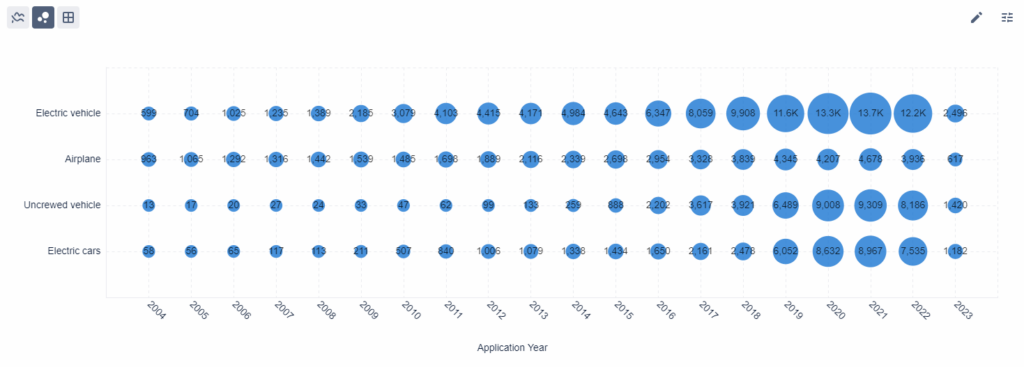
As the graph above illustrates, patent filing trends in EV and aviation are on the rise. This is significant because the rising trend in patent filings for EVs and uncrewed vehicles indicates growing innovation and investment in these sectors, particularly over the past six years.
It suggests a shift in transportation and technological advancements — such as flying cars.
2.) Electric Plane Trends
Flying cars aren’t the only electric innovation about to hit the sky. Commercial airlines are also working to debut electric and hybrid aircraft.
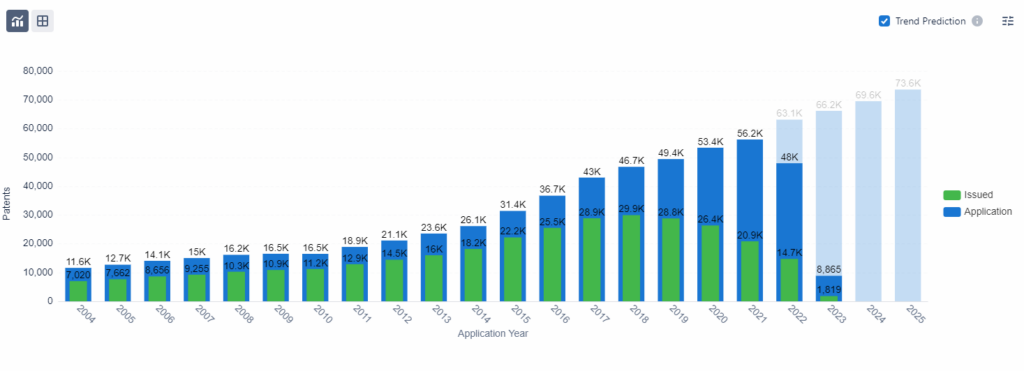
The rise in electric plane patent filings, as depicted in the above chart, signals a shifting landscape in aviation, emphasizing electric propulsion. By 2025, an expected 73,000 applications in this domain highlight the industry’s commitment to electrification.
The collaboration between giants like Boeing and NASA with major airlines on the Sustainable Flight Demonstrator project emphasizes the industry’s move towards cleaner and more efficient air travel. With the innovative X-66A promising a significant reduction in fuel consumption and emissions, the trajectory is clear: the future of aviation is electric.
The success and acceptance of electric planes play a crucial role in paving the way for flying cars. If the aviation industry can successfully integrate electric planes and gain consumer trust in their safety and efficiency, it sets a precedent and opens doors for the broader adoption of flying cars. The advancements in electric flight technology, infrastructure, and regulations for electric planes will be instrumental in shaping the future of urban air mobility, including flying cars.
3.) Key and Emerging Players
Airplane titan Boeing, valued at over $136 billion, has long been a dominant force in the electric aircraft arena. Yet, what’s somewhat surprising is the entrance of tech powerhouse Huawei into this sector in 2017.
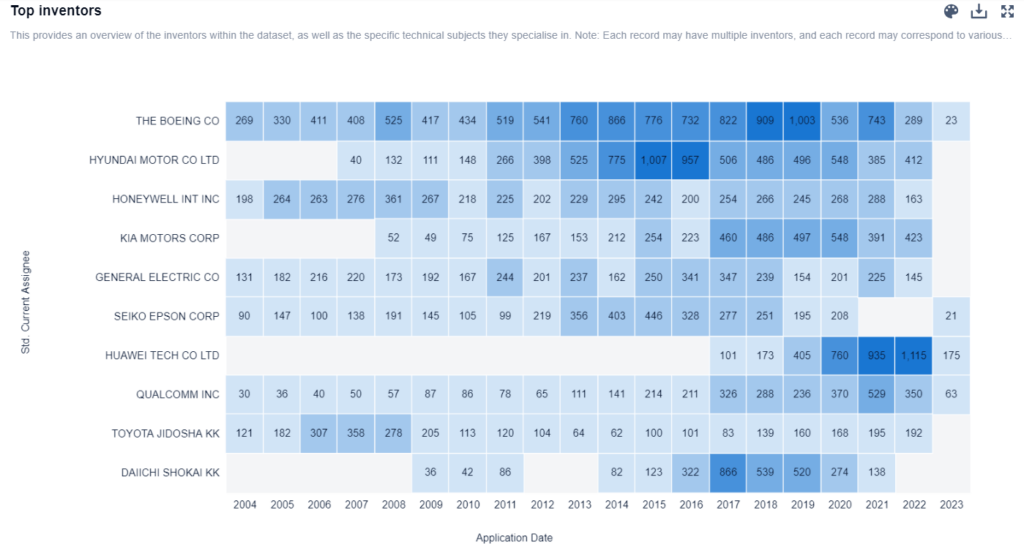
Looking at top innovators in the EV arena, we also see a similar pattern with Huawei:
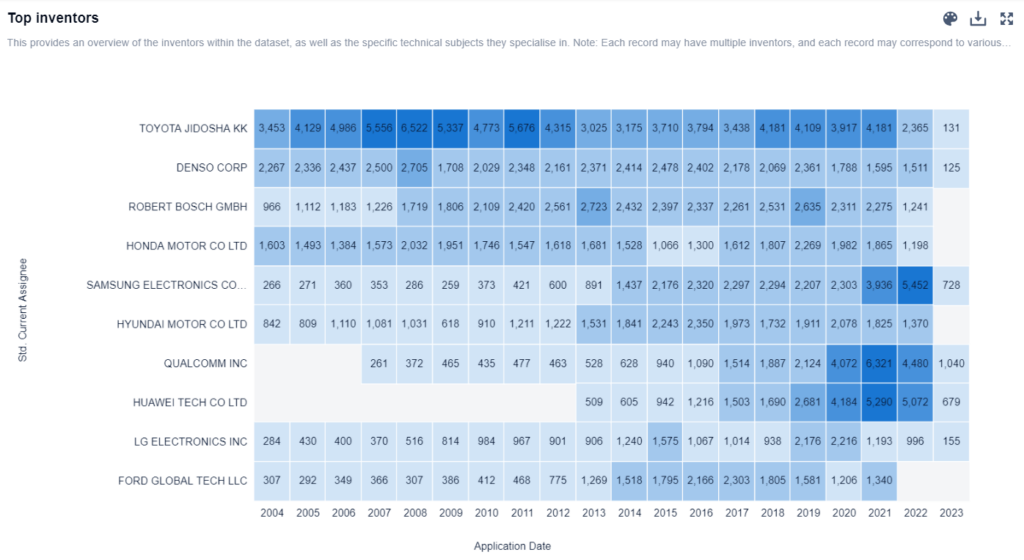
Huawei’s rapid ascent as a leading innovator signifies a blurring of industry boundaries and hints at a future where tech giants could reshape the aviation landscape.
4.) EV and Electric Aircraft Funding Trends
To truly grasp the dynamics of an industry, it’s imperative to trace the financial trends. When it comes to EVs and electric aircraft, 2021 marked a significant peak in investments.
Funding for electric aircraft reached nearly $4B, while EVs garnered just under $78B.
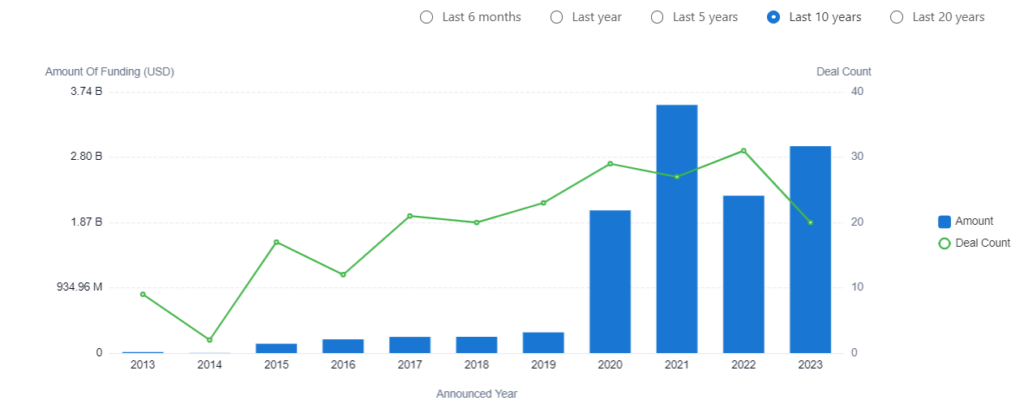
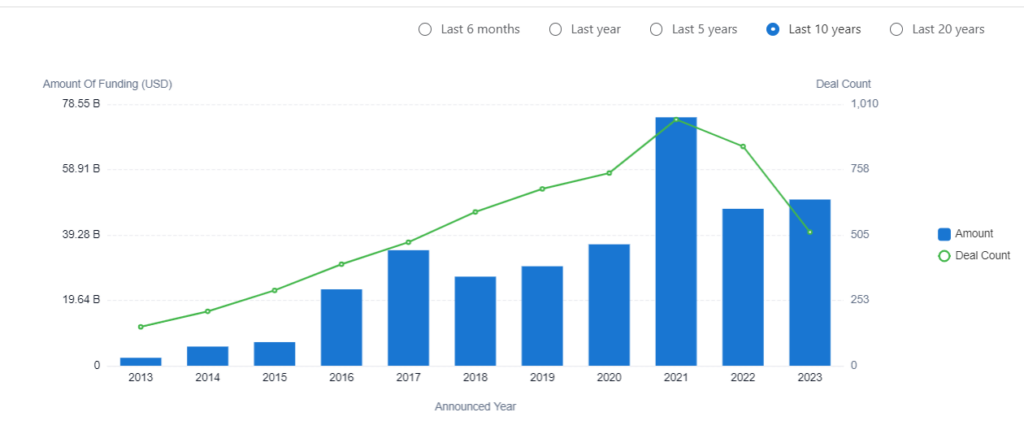
However, there was a noticeable decline in 2022, but the investments appear to be experiencing another uptick this year.
This financial ebb and flow not only underscores the industries’ vitality and resilience but also emphasizes the unwavering investor confidence in the future of electric transportation.
Closing Thoughts
Alef Aeronautics’ forthcoming FAA-approved electric flying car is ushering in a new era in transportation. With a surge in patent filings and tech giants like Huawei entering the scene, the future of flying cars is not just promising but imminent. Ultimately, electric innovation is driving us toward an aerial revolution.